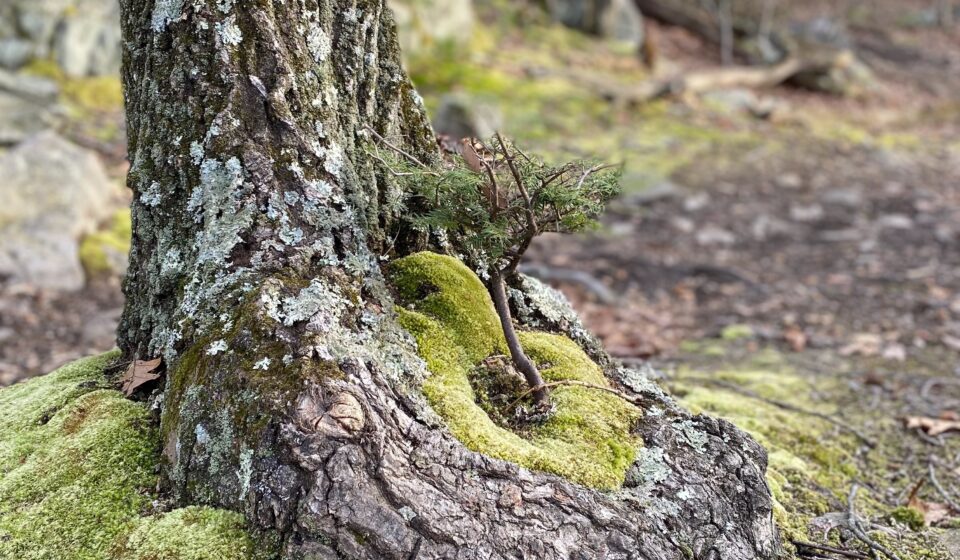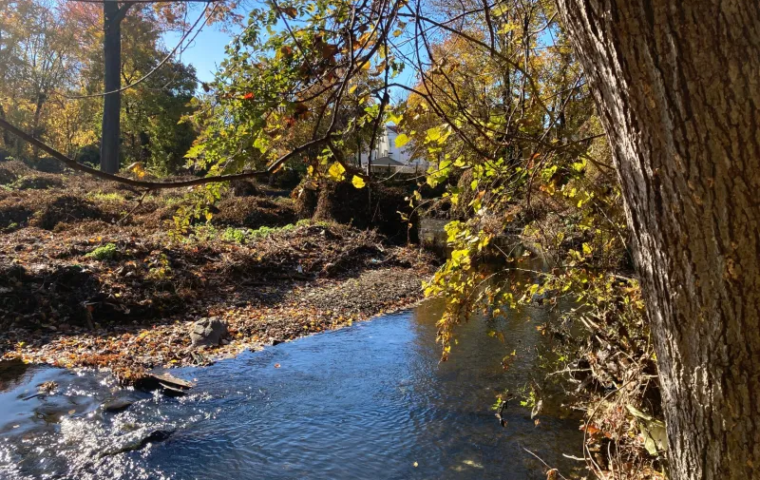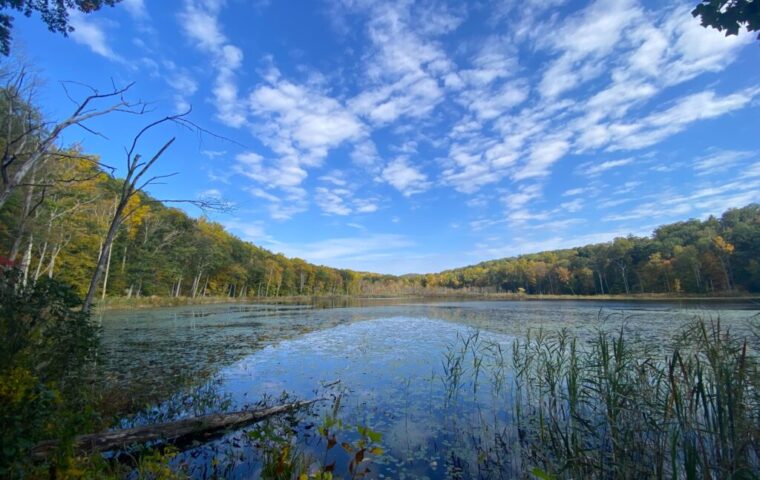
This op-ed originally appeared in Halston Media News on April 27, 2024.
By Janelle Robbins, vice president of conservation at Westchester Land Trust
Westchester Land Trust recently received an investment for the ages: an anonymous donor’s grant of $100,000 that serves as a life-changing, and hopefully lifesaving, gift to our forests.
Regardless of where we live and how outdoorsy we are, most of us love trees—and for good reasons. A hike in the forest strengthens our bodies and clears our minds. Time in nature is so important for our mental health that some doctors now prescribe it to their patients. Trees can even help improve the quality of life—in urban spaces, research shows that areas with 10 percent more trees have 12 percent less crime.
Our forests are critical to climate change resiliency, too. Their shade reduces the heat island effect, which occurs when paved surfaces and dark rooftops make urban air temperatures notably hotter than surrounding less developed areas. Trees also provide important ecosystem services, like absorbing rain and snowmelt and slowing runoff.
But our forests are in trouble.
Imagine you’re walking in one of your favorite forested areas in Westchester. You walk past a tangle of vines along the forest’s edge and notice a new sunny break in the canopy where some trees have fallen. You follow the rat-a-tat-tat of a woodpecker foraging on insects that took up residence under the bark of a tree. The trail is a bit mucky after that last big spring rainstorm. A few whitetail-deer bound away, easily navigating between trees and what few shrubs are present.
When you take a hard look, you can see what Aldo Leopold meant when he said “One of the penalties of an ecological education is that one lives in a world of wounds. Much of the damage inflicted on land is quite invisible to laymen.
Pests and diseases are decimating many of our most common trees. In just the last decade, ash trees have become functionally extinct across much of our region. Beech trees may be next, due to the emerging threat of beech leaf disease. And they’re not the first trees to succumb to insects and pathogens—over the last century our chestnut, elm and hemlocks have mostly been erased from the landscape.
You’d think that as we lose mature trees, young ones would naturally take their places. Instead, invasive plants from Europe and Asia seize the moment—and all the sunshine and nutrients that would have otherwise sustained healthy native trees. Since these newcomers didn’t evolve with our native plants and wildlife, there’s little in the way of natural checks and balances. Invasive vines like Asiatic bittersweet and porcelain berry smother and constrict trees and deer find these invasive plants to be largely unpalatable and offer no help in taming their spread.
Speaking of deer, Westchester’s population is unsustainably large. Our forests are severely overgrazed, which limits natural tree regeneration. The deer also decimate the shrub layer and most forest wildflowers, leaving the forest floor barren. The result is zombie forests that consist of a shrinking number of large mature trees and no understory of young trees or native shrubs.
These threats leave forests vulnerable to other stressors, like climate change. We’ve seen extreme weather events like drought one year, deluges of rain the next, and high winds. We’ve lost hundreds of trees in our 45-acre Hunter Brook Preserve (Yorktown) alone due to unusually high winds and strong storms. Our newly protected 137-acre Buttonbush Preserve (Cortlandt), isn’t even open to the public yet, but sustained a 6-acre brush fire last spring.
The six-figure investment awarded to Westchester Land Trust will support a large-scale plan to restore the health of our forested preserves and share our learnings across the region.
The outlook for our forests may feel bleak. But solutions exist, and they are deceptively simple, even if the scope is ambitious:
- Vine cutting. This is possibly one of the most satisfying activities. By cutting invasive vines in the winter (cut at ground level and head height), you can relieve a tree of a massive stressor, freeing up its strength to stand tall against other threats. With the help of volunteers, we’re cutting vines on 60 targeted acres across 13 of our preserves.
- Tree plantings. We’ll be planting 450 trees this spring and fall in 11 of our preserves to give our forests a boost.
- Deer exclosures. This summer, we’ll be working with our conservation apprentices and Groundwork Hudson Valley’s Green Team, to erect a 10-acre deer fence at our Frederick P. Rose Preserve (Lewisboro) to allow for regeneration where we expect a massive dieback of mature trees due to beech leaf disease.
- Tree protection. When we find young trees in forest clearings outside exclosures at 10 preserves, we’ll protect their growth with tree tubes to prevent deer browse.
We invite you to join us in restoring Westchester’s forests:
- We need volunteers to help with vine cutting and tree planting. Send an email to ben@westchesterlandtrust.org to receive information about upcoming volunteer outings.
- We want more landowners to protect the land they love through conservation easements. Contact gentian@westchesterlandtrust.org to learn if an easement is a good fit for you.
- We’ll be telling our story at westchesterlandtrust.org, where you can follow our progress and help us amplify our impact through donations.
And maybe most of all, we need more hope that the forests we draw our comfort from will be here for generations to come.






